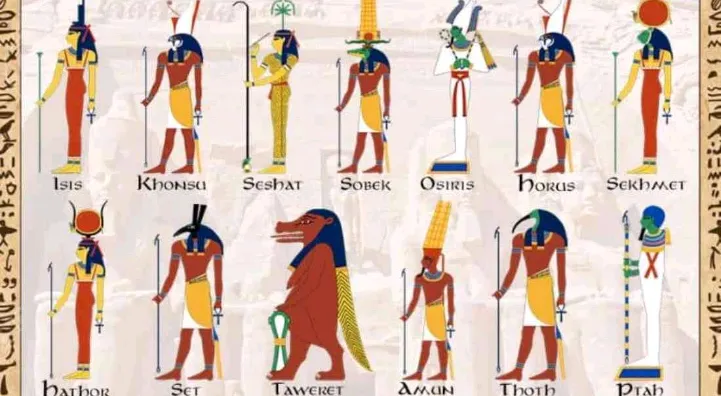The Pantheon of Power: Exploring the 15 Most Influential Gods of Ancient Egypt and Their Sacred Symbols
Introduction
Ancient Egypt, known for its monumental architecture and sophisticated civilization, was deeply rooted in a religion defined by a rich pantheon of gods and goddesses.
Each deity possessed distinct attributes and played specific roles in maintaining cosmic order, known as maat.
The religious beliefs of the Egyptians were reflected in their art, texts, and everyday life. These deities were often represented by symbols that conveyed their power, attributes, and influence over the world. This article delves into the 15 most powerful ancient Egyptian gods, exploring their roles, associated signs, and stories from folklore and historical accounts that highlight their significance.
1. Ra: The Sun God
Ra, the preeminent deity of the Egyptian pantheon, was revered as the god of the sun and the creator of all life. His daily journey across the sky in his solar barque symbolized the cycle of life, death, and rebirth. Ra was often depicted as a man with the head of a falcon crowned by a sun disk surrounded by a cobra.
Sign: The sun disk was Ra’s primary symbol, representing light, warmth, and growth. The cobra (uraeus) around the disk signified his protective nature and divine authority.
Folklore: In the myth known as the Book of the Heavenly Cow, Ra withdraws from humanity due to their disobedience, emphasizing his might and the significance of maintaining harmony with the divine.
2. Osiris: The God of the Afterlife
Osiris, the god of the dead and the afterlife, was synonymous with resurrection and fertility. Represented as a mummified man with green skin (symbolizing rebirth) and a white crown adorned with ostrich feathers, he governed the underworld and judged the souls of the deceased.
Sign: The Djed pillar, symbolizing stability and endurance, was associated with Osiris and represented his backbone, further emphasizing his link to resurrection and eternal life.
Historical Context: The Pyramid Texts, some of the oldest religious writings in existence, describe rituals to ensure the pharaoh’s transition to the afterlife under Osiris’s protection.
3. Isis: The Great Mother Goddess
Isis, one of the most venerated goddesses, was known for her magical prowess and compassion. As the wife of Osiris and mother of Horus, she was a symbol of motherhood, protection, and healing. Isis played a pivotal role in the myth of Osiris’s death and resurrection, using her magical skills to revive him.
Sign: The throne hieroglyph atop her head was her primary symbol, representing her role as the mother of the rightful king, Horus. The ankh, the symbol of life, was also closely associated with her.
Folklore: The Coffin Texts detail how Isis’s sorrow for Osiris’s death led to the flooding of the Nile, illustrating her powerful connection to nature and...



